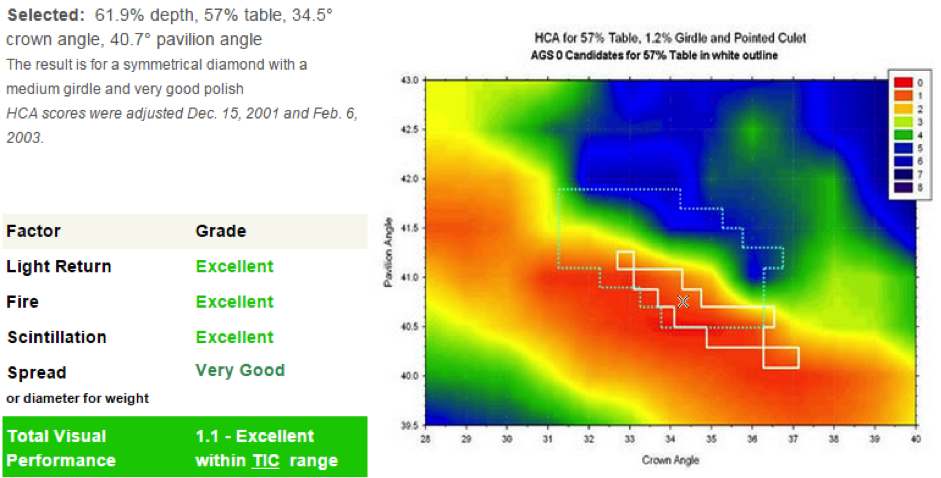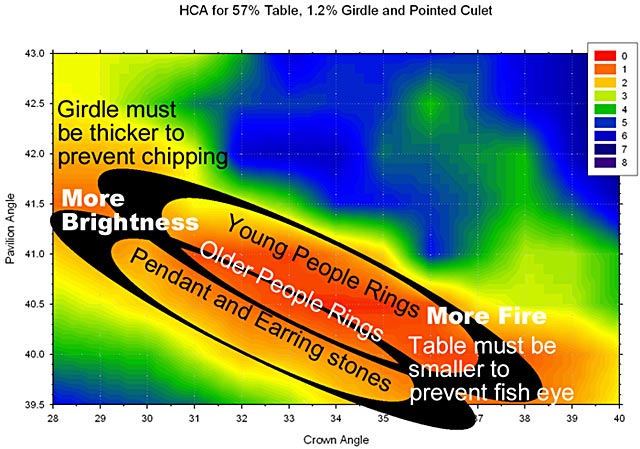How Are Diamonds Made? Natural vs Lab-Created Explained
Two Paths, One Diamond Not all diamonds come from the same place — but they all start the same way. Pure carbon, crystalized under immense pressure and heat. Whether it…
Either you have used HCA and clicked on the warnings link at the bottom of the page, or come from the tutorial.
Garry Holloway developed HCA in 2001 to help people sort out and reject likely poorly performing round brilliant cut diamonds; it has been controversial ever since. At that time there were no round diamond cut grading systems at all! HCA, and Pricescope by association, has been unpopular with many diamond vendors.
GIA spent millions on cut research, and in many people’s opinions copied the HCA patent and launched their round diamond cut grade 5 years later. I could not have developed HCA without the Firescope and DiamCalc research and tools like DiamCalc developed by Octonus and Moscow State University. AGSL also did a lot of research and used ray tracing approaches based on what they too learned from DiamCalc. In 1999 neither GIA nor AGSL heads or researchers understood or believed me when I introduced the inverse Crown and Pavilion theory.
The ‘X’ on the HCA results charts marks the pavilion° / crown° position on the closest table size. The white outline shows the AGS ideal ‘candidate’ range and the green dotted line shows the GIA Excellent ‘candidate’ range. A conservative choice would be a diamond with proportions in the overlap of all 3 systems.

HCA is only for round diamonds with known Table, Crown, Pavilion and Total Depth parameters; it has no idea about the diamonds symmetry, poor minor facet proportions or various cutters tricks like painting or digging.
Use it to reject known poor performers and narrow down your selection. Please do not use it for final selection; it will not replace an analysis with an Ideal-scope and/or an independent appraisal.
Stones listed here are ranked by HCA scores, and many have ideal-scope photo’s and other cool stuff.
GIA’s new system is similar to HCA but with symmetry, polish and minor facet data (all also covered in my patent, but not implemented because that requires a lot of work and HCA is provided here for free!), but the data on GIA reports has been rounded by more than I believe it should be. In order of importance: Pavilion 0.2°, Crown 0,5° lower girdle depth 5%. The steeper crown and deeper pavilion GIA graded ‘Excellent’ diamonds favour better yields for diamond cutters (who pay for the grading reports) and usually show a dark dull ring in the table area and make the effect of dirt on the pavilion more visible and ugly.
Diamonds that rate below 2 (red on the chart) are unlikely to show too much leakage darkness, overly thin or thick girdles, or fish-eyes. But there are other negatives that HCA can’t predict. Additionally, if you examine diamonds from closer up than 10 inches (25cm) in your selection process, you will probably prefer diamonds with proportions that fall in the “Young Peoples Rings” area that is marked on the chart below in the upper right of the red zone.

Shallow stones (lower left on the chart) look darker if you have excellent close up vision because your head obstructs more light sources which makes a shallow diamond appear darker. But shallow diamonds have a bigger spread, and are great for pendants and earrings, where normal social viewing distances apply.
Stones near the center of the red region (the lowest scores) are least affected by symmetry variations. Alternatively hearts and arrows diamonds, an indication of excellent optical symmetry, can have HCA scores above 2 but may out-perform diamonds with lesser symmetry and better HCA scores.
HCA is fine-tuned from time to time – results may change without notice. Remember – only use HCA to reject diamonds & narrow down your selection. A full technical description of HCA can be found at www.diamond-cut.com.au
Garry Holloway, FGAA DDT
Discuss on the Forum
AGS Ideal Cut »